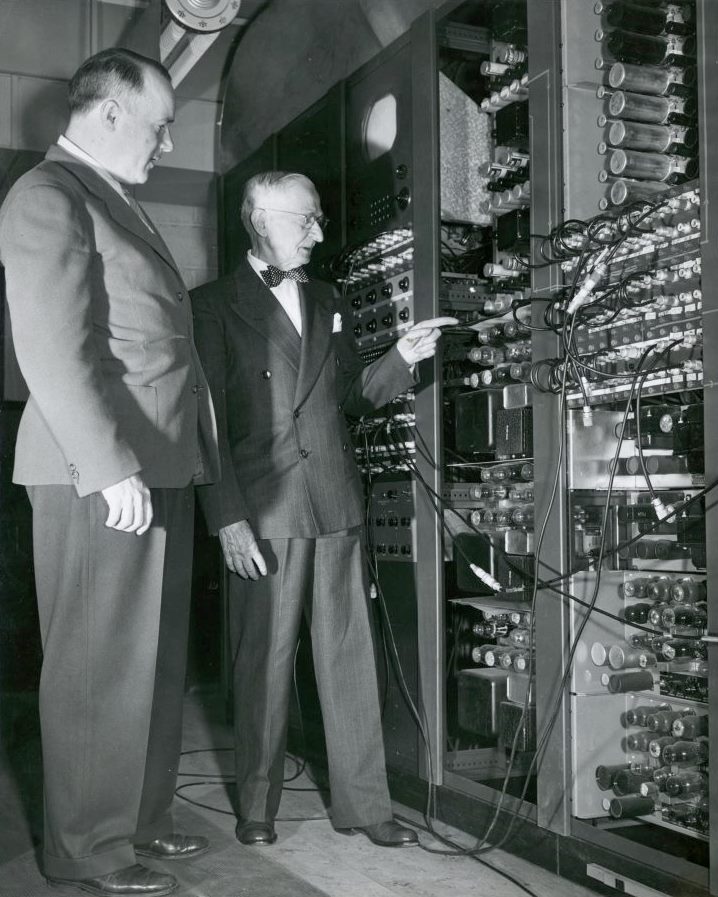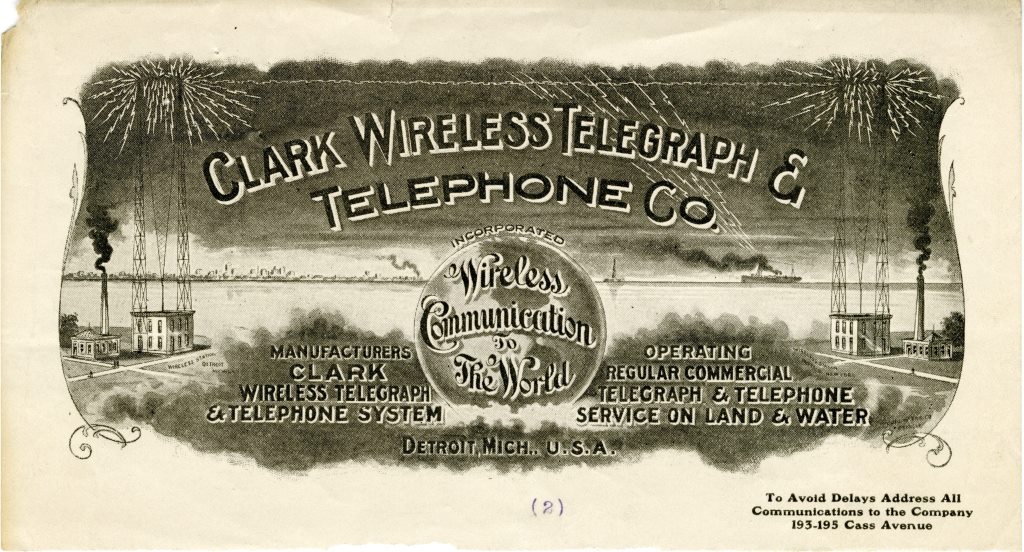Who was called the “Wireless Wizard” by the Port Huron Sunday news in 1909? Who worked with Henry Ford, Thomas Edison, and Charles Steinmetz, and was an informal student of Nikola Tesla? Who was the consulting engineer when one of the first commercial broadcast stations (WWJ) came on the air? Who was the first to equip steamships on the Great Lakes with wireless and place stations at strategic locations on shore to communicate with them? Why, it must be Thomas E. Clark!
 Thomas E. Clark (right) and WWJ Engineer E.J. Love (left) inspect some of the station’s broadcasting equipment, c. 1950.
Thomas E. Clark (right) and WWJ Engineer E.J. Love (left) inspect some of the station’s broadcasting equipment, c. 1950.
Clark introduced wireless communication to the Great Lakes region, at one point operating a network of almost twenty shore stations and spark wireless telegraph stations on ships on the Great Lakes. He was also self-educated, attending the 1893 World’s Columbia Exposition in Chicago where he was inspired by Tesla’s work. When he returned home, he patented his own designs a system of wireless telegraphy, as well as a coherer—a device for detecting radio signals. Clark was an innovator and visionary experimenter, with interests far beyond the field of communication. He provided an ignition to Henry Ford for a prototype car. He also built an electric car (each and every part) and would loan it to friends, telling them that it would cost $8. When they asked if that was what he charged, he would say “no, but that is what the farmer at 8 Mile Road will charge you to tow it back.” By 1902, he owned the largest automobile garage in Detroit.
 This variable condenser was manufactured by Clark in 1898. Within its glass shell are fifteen aluminum plates, which can be rotated using a dial on the top to control how much electromagnetic energy the unit can store, similar in purpose to modern capacitors.
This variable condenser was manufactured by Clark in 1898. Within its glass shell are fifteen aluminum plates, which can be rotated using a dial on the top to control how much electromagnetic energy the unit can store, similar in purpose to modern capacitors.
It’s hard to dispute a 1962 Detroit News editorial which stated, “When historians of a later age unearth the secret of what made Detroit a city of magic and of gentle giants, Mr. Clark will be a part of their findings.” - Elizabeth Zerwekh, Wayne State University Graduate Student
 This c. 1905 advertisement for the Clark Wireless Telegraph and Telephone Company fancifully illustrated wireless communication between stations in Detroit, Buffalo, and a ship on Lake Erie. Clark’s company eventually changed its name to Tecla, which still continues today, although with a focus on pet toys and fishing supplies rather than radio equipment.
This c. 1905 advertisement for the Clark Wireless Telegraph and Telephone Company fancifully illustrated wireless communication between stations in Detroit, Buffalo, and a ship on Lake Erie. Clark’s company eventually changed its name to Tecla, which still continues today, although with a focus on pet toys and fishing supplies rather than radio equipment.